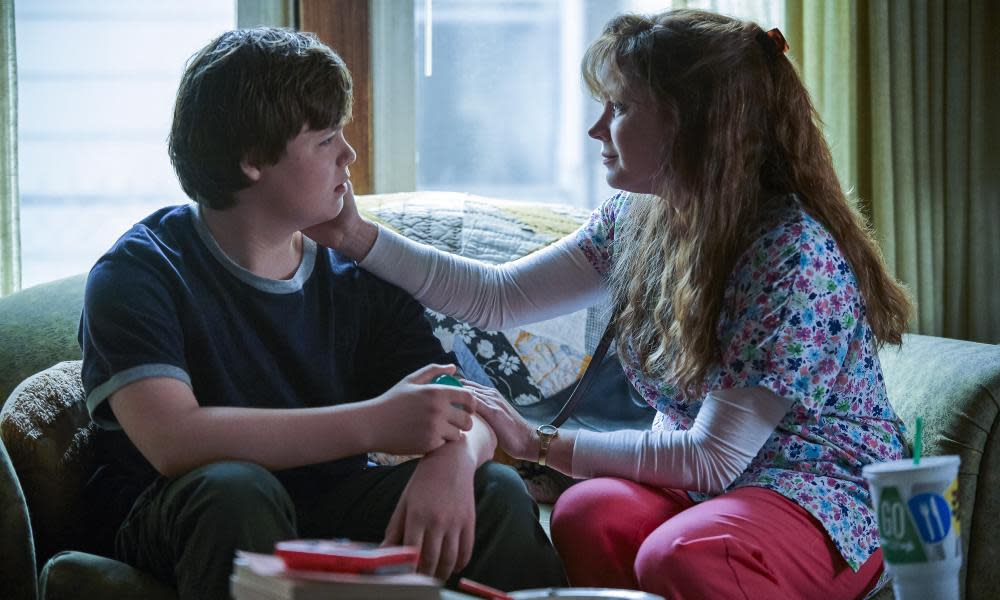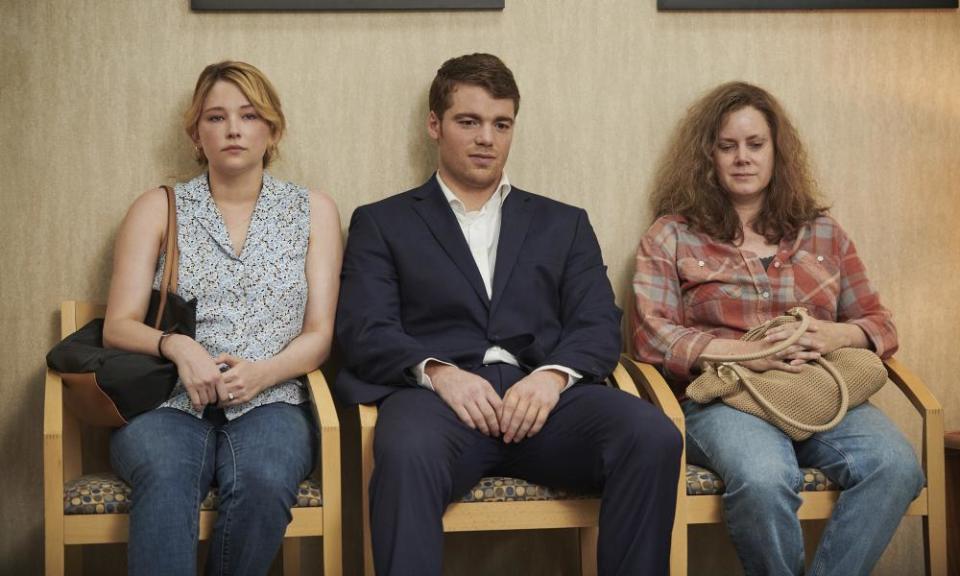How Hillbilly Elegy tries and fails to show the 'real' America

By now, a week after its release on Netflix, a critical consensus has emerged: Hillbilly Elegy is a bad movie, maybe one of the worst of the year. That hasn’t stopped the film, also released in select theaters on 11 November, from becoming popular; it’s one of the 10 most watched Netflix films of the past week, probably in part due to name recognition of its source material, the 2016 memoir of the same name by JD Vance, and in part thanks to two movie stars, Amy Adams and Glenn Close, who don prosthetics and mom overalls for roles of capital-S struggle in what, as some have noted, is the worst kind of Oscar bait.
Related: Hillbilly Elegy review – Glenn Close's grouchy gran saves the day
In the weeks since Hillbilly Elegy’s release, numerous writers have chronicled the heap of factors that have rendered what was probably a well-intentioned project, penned by The Shape of Water writer Vanessa Taylor and directed by Ron Howard, into a dismal mess of stereotypes. Among them: Howard’s film sands down Vance’s memoir, removing any conviction or insight; the memoir itself – of a man who went from humble upbringings to Yale Law School to work for Peter Thiel before allying himself with fringe conservative blogger Rod Dreher (an alignment scrubbed from the film) – is deeply flawed; both frustratingly replicate a panoply of tropes of (white) Appalachian hillbillies; as a movie, Hillbilly Elegy is somehow both histrionic and boring.
To that list I would add that Hillbilly Elegy is extra bad in its deflection of who and what it’s even about – a caricature of “hillbillies” in a non-rural yet still other-ized place (the majority of the film takes place in Middletown, Ohio, where Vance grew up). That setting is relegated to an ambient, unmoored, “real America” backdrop to one man’s story of escape. As with most Hollywood pieces attempting to communicate the white working class, or “other” America, Hillbilly Elegy ultimately says much more about its imagined audience, and the stories some Americans are looking to find in films about economic struggle in the US, than the people it purports to portray.
Part of this mess is merely that the decision to adapt the book, which was adopted by many pundits as a skeleton key to understanding Trump’s victory in 2016, turning Vance into an overnight figure in the young-ish conservative sphere, has aged very poorly. Bootstraps conservatism aside, Vance’s memoir of his family’s flight from eastern Kentucky to Middletown, Ohio, from a childhood marked by upheaval to the marines, Ohio State and then Yale Law, was compelling, in the way that any non-celebrity reflecting on their personal arc can be. But it probably would never have gotten silver screen treatment if not for the rapturous and misguided attention lavished on the book as a manual to Trumpism, one that over-emphasized white working-class poverty and made excusable the racism inherent in his rise.
Neither book nor movie, as many writers from Appalachia and other small towns in America have pointed out, reflects the region or an accurate view of economic struggle in the United States. In fact, the film barely portrays Appalachia (or at least, the white, Scots-Irish population eulogized by Vance) much at all, save for its opening scenes. Other than scenes of Vance’s girlfriend in New Haven, and his struggles with unrealistically cold, incurious Yale Elites at the film’s outset, the majority of Hillbilly Elegy takes place in Middletown, a small city of about 50,000 people halfway between Cincinnati and Dayton in south-western Ohio.
Middletown has certainly struggled with the decline of manufacturing jobs in the 70s and 80s, and the 2008 recession, which bisects, out of sight and unmentioned, the dual timelines (Vance’s childhood in the late 90s and his return home in 2011) in Hillbilly Elegy. It’s not rural nor Appalachia but a place that warbles in and out of loose classifications in America, much like the oft-evangelized “middle class” that increasingly doesn’t exist, at least in the form of stability and upward mobility that it’s assumed to represent. Middletown is, like its name, a floater, too big for a small town and not quite a city, a category notoriously hard to pin down in TV and film but very much a real place with real people. (While some of Hillbilly Elegy was filmed on location in Ohio, the majority of the Middletown scenes were filmed in Georgia, where tax breaks have made the state the stand-in for non-coastal USA.)

Vance’s book told a story of Middletown in decline that was partly true; it would be difficult to raise a family of five children and afford college today on a single postal service salary, as my grandmother’s family did in Middletown in the 1930s and 40s (with help, as with so many white families at the time, from the GI bill). Then again, that’s difficult anywhere in America today, as what remains of the middle class is hollowed out by student loans, other debt and/or medical costs. None of this is directly discussed in the film, and it is streamlined in the book into a conservative argument of personal responsibility and cultural “hillbilly” issue. But that interest in “understanding” the “real” America, both foggy concepts that fall apart on inspection, and of having answers for Trump served on a platter, sanitized of racism, systemic injustices or extractive capitalism, certainly informed widespread interest in the book and film, and charitable readings of the movie (see: the positive review from the conservative ghoul Ben Shapiro, retweeted by Howard as part of his film’s promotion).
Hillbilly Elegy was perhaps predisposed to be a bad film, but there’s clearly an audience for a movie set in a real place, in a recent time, that captures some aspect of the country outside major cities, a portrait of the strange hybrid America in which you can be both middle-class and financially precarious for years, in which gentrification and decay, progress and regression coexist and counteract. There are great films to be made by and about Appalachia, or the Middletowns of America. I would even watch a better Hillbilly Elegy, one that captures the fun and everyday amusement between the caricatured fights, as hinted by a series of home photographs and video that run along with the credits. But this Hillbilly Elegy, with its star-power Oscar bait and road to nowhere, is merely the terrible endpoint of a misleading, shallow reflection.

 Yahoo Movies
Yahoo Movies 
